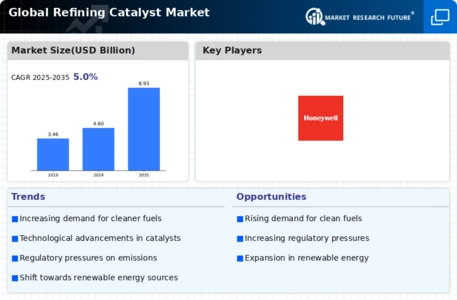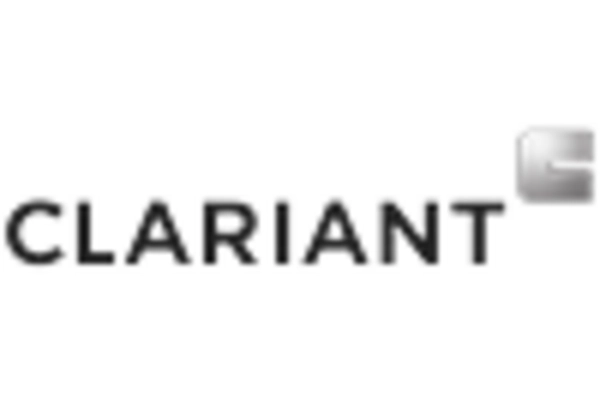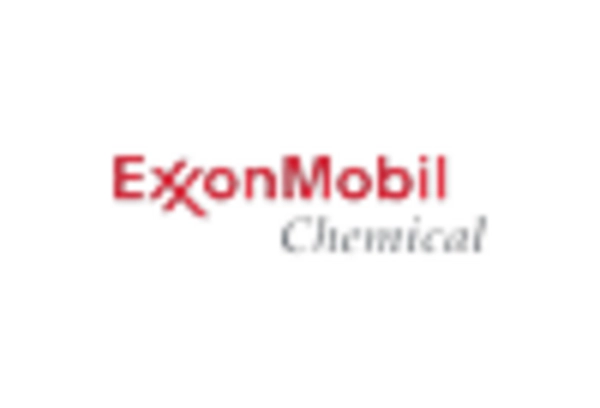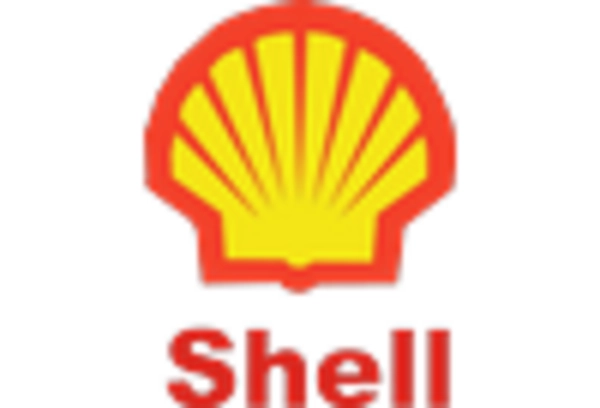Market Trends
Key Emerging Trends in the Refining Catalysts Market
The refining catalyst market is witnessing significant shifts and trends driven by various factors influencing the global energy landscape. One prominent trend is the growing demand for cleaner fuels and stricter environmental regulations worldwide. As governments and regulatory bodies impose stricter emission standards, refineries are under pressure to produce fuels with lower sulfur content and reduced pollutants. This has led to an increased adoption of advanced refining catalysts capable of facilitating more efficient and environmentally friendly refining processes.
Moreover, there is a noticeable emphasis on improving refinery efficiency and optimizing production processes to meet the rising demand for petroleum products. Refineries are increasingly investing in innovative catalyst technologies that enhance conversion rates, maximize yields, and minimize energy consumption. Catalysts play a crucial role in catalytic cracking, hydroprocessing, and other refining processes by accelerating chemical reactions and improving product quality.
Another key market trend is the growing focus on sustainability and the development of catalysts that enable the conversion of renewable feedstocks into valuable products. With the escalating concerns over climate change and finite fossil fuel resources, there is a growing interest in bio-based and renewable feedstocks for refining. Catalyst manufacturers are investing in research and development to create catalysts suitable for processing renewable feedstocks such as bio-oils, vegetable oils, and waste materials, thereby supporting the transition towards a more sustainable energy future.
Furthermore, technological advancements such as nanotechnology and molecular modeling are revolutionizing the refining catalyst industry by enabling the design of highly selective and efficient catalysts. Nanomaterials offer unique properties such as high surface area, enhanced reactivity, and improved selectivity, making them promising candidates for catalytic applications in refining. Molecular modeling techniques allow researchers to predict the behavior of catalysts at the molecular level, facilitating the design of tailored catalysts with optimized performance characteristics.
In addition, the shifting dynamics of the global refining landscape, including the expansion of refining capacities in emerging markets and the increasing complexity of crude oil sources, are driving the demand for specialized catalysts tailored to specific refining challenges. As refineries upgrade and expand their operations to process heavier and more sour crude oils, there is a growing need for catalysts capable of handling these feedstocks and addressing associated issues such as high sulfur content, metals contamination, and increased coke formation.
Moreover, the COVID-19 pandemic has had a significant impact on the refining catalyst market, disrupting supply chains, reducing demand for petroleum products, and delaying refinery expansion projects. However, as the global economy recovers and demand for fuels rebounds, the refining industry is expected to resume its growth trajectory, driving demand for catalysts used in refinery optimization and capacity expansion projects.

















Leave a Comment